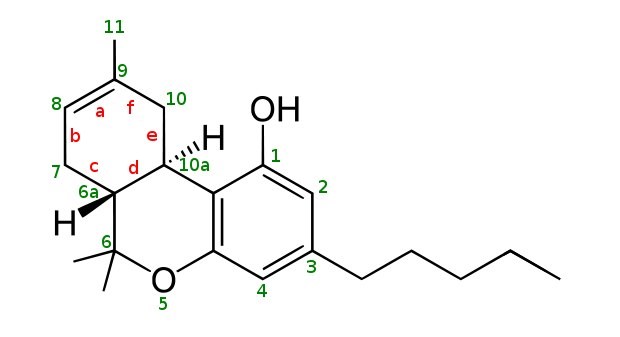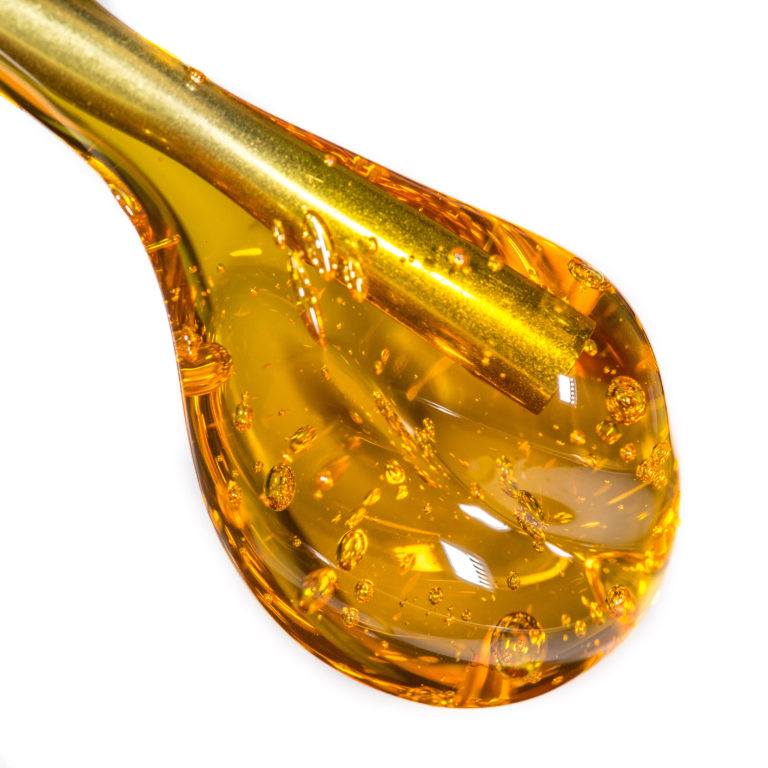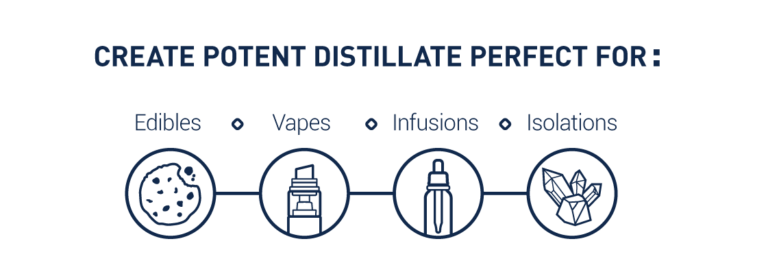Before you learn how to empty receivers of cannabinoids using a microwave, please be advised there are several ways this can go wrong. This blog post does not purport to address all the possible safety concerns. Please consult your safety officer for full professional guidance. High-purity THC/CBD distillate will be very viscous. If it is cold […]

Delta-9-Tetrahydrocannabinol (THC) is a naturally occurring isomer of THC found in cannabis plants. It’s psychoactive effects are well known. While delta-9-THC is the most abundant isomer of THC, there is interest in the lesser studied delta-8-THC isomer. IUPAC Naming Convention The diagram below has numbered positions on the top left ring structure. If the double […]

No Leaks – No Streaks – No Smell
by PaulTired of chasing vacuum leaks, streaks and residual terpene smell in your THC distillate? Try spinning band distillation on your crude extract. No leaks Stop chasing vacuum leaks and using globs of messy vacuum grease (vacuum grease is not food grade). Spinning band distillation uses o-ring joints that are vacuum tight with every use. […]
Distillation Rates Comparison
by brblogHow do different methods of distillation stack up against each other? System (Size) Distillation Rate Liters of Distillate Number of Passes Final Purity Total Time Short Path 1 (Average) 0.5 L/hr 10 L 2 90% 40 Hours Short Path 2 (Large) 1 L/hr 10 L 2 90% 20 Hours Wiped Film 1 (Average) 0.75 […]
Short Path Distillation Short path distillation is an introductory distillation technique sometimes used in labs in their start up phase. Short path produces usable but lower quality oil often in the 80% cannabinoid range after 2-3 passes. A common problem during short path operation are vacuum leaks which lead to degradation and dark oil. Spinning […]

THC Oxidation to CBN CBN is the oxidative degradation product of THC. It is more stable than THC due to its conjugated structure. THC- Delta 9 CBN […]

Spinning band distillation separates the cannabis oil extract according to the boiling points of the components. Mono-terpenes have the lowest boiling points, so they are collected first. They can be found in the cold trap receiver due to their low boiling points. Residual ethanol is collected next in the fraction collector followed by the higher […]

Spinning band distillation Spinning band distillation can produce distillate with very high THC/CBD concentrations. Over 90% THC concentration is typical for a first pass. Some customers are routinely producing 98%+ cannabinoid distillates! How does the spinning band do it? Distillation separates components by their boiling points. This is commonly referred to as the “efficiency” of […]
Latest Blog Posts
Instant THC and CBD Potency in Edibles by Near Infrared (NIR)
by Paul on August 14, 2021
B/R Solvent Recyclers, Safe Recycling since 1986
by Paul on August 9, 2021
Touch Screen Makes Solvent Recycling Easier
by Paul on August 8, 2021
Measure THC, CBD and more in Real Time During CO2 Extraction with Near Infrared
by Paul on August 7, 2021
SCB-15 THC Remediation Case Study
by Paul on July 14, 2021
Questions?
Contact us for more information on our products and services.